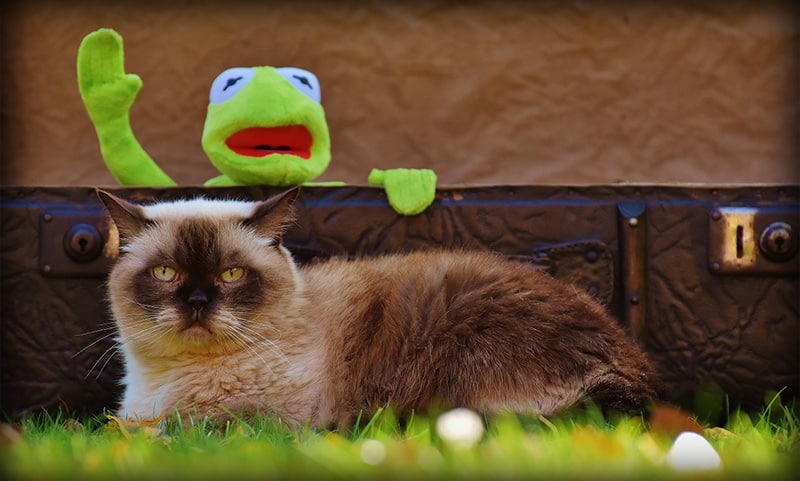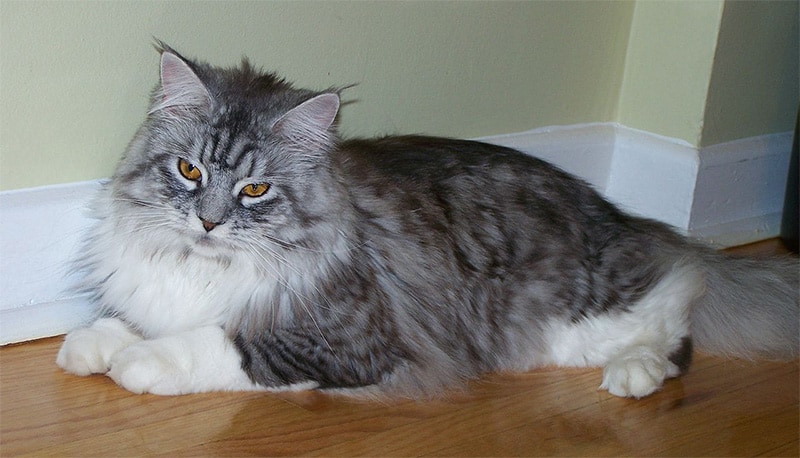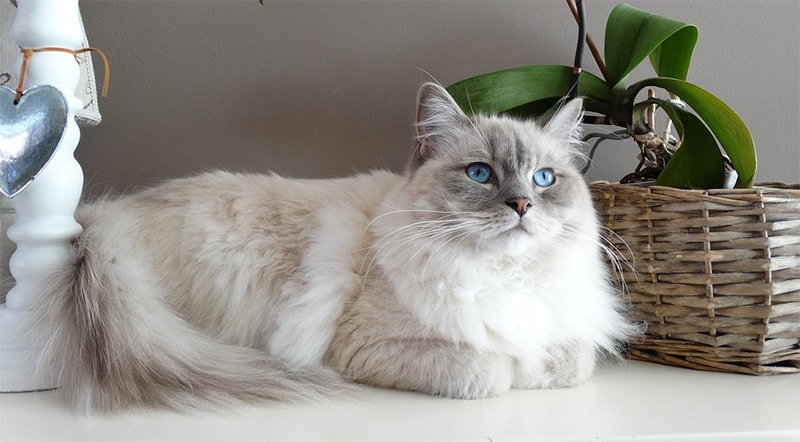10 Friendliest Cat Breeds
Cats have a bit of an unfair reputation as antisocial, selfish pets. If you search quotes about cats, it’s likely you’ll see “A dog is a man’s best friend. A cat is a cat’s best friend”; and “As every cat owner knows, nobody owns a cat”. However, as cat owners, we understand this reputation is unfair (mostly!) A cat is more than just a pet; they’re a companion, a friend, and even part of the family. Every cat has a unique disposition and whilst part of this can be attributed to training and individual personality, their breed can play an important role.
The relationship between cats and humans goes back at least 9,500 years, from which period archaeologists in Cyprus discovered a burial of a human next to a wildcat, suggesting some sort of relationship between the two. The symbiotic relationship seems to be based around agricultural development, whereby cats were permitted and even encouraged to stay around farms to prevent rodents from infesting the stores.
It was a perfect solution for both cats and humans, as cats had an abundance of prey and humans got effective pest control. This relationship can be traced through China’s agricultural boom over 5000 years ago, and some authors even suggest it could have begun up to 12,000 years ago when the first successful agricultural societies began to appear in the Middle East.
Gradually and without any real intention from humans, wild cats became domesticated as humans favoured cats with more docile traits. The cats that descended eventually started to be bred specifically for their traits and appearances, resulting in dozens of breeds of cats today. The breeds that exist now are the result of thousands of years of interaction with humans and many have been bred particularly to be friendly. Here are our 10 friendliest cat breeds:
Contents
1. Persian
Persian cats are renowned for their friendly nature and refined features. The Persian breed is particularly old and originated in Mesopotamia (later known as Persia and now modern-day Iran). Their arrival in Europe can be credited to the 17th-century nobleman, Pietro Della Valle, who brought the first longhaired cats to Europe. Persian cats were particularly popular in the 19th century, partly due to Queen Victoria’s fondness of the breed.
The breed has evolved in appearance over time as breeders moulded the Persian. Originally the cats all had shiny, silky gray fur, however, they are now available in a range of different colors. Persians have been bred to have a short face, snub nose, round cheeks, big eyes and hair that surpasses most other breeds in length.
Persians are known for being quiet and docile, almost ornamental in their ability to sit contently in their owner’s laps. They prefer peaceful homes and easygoing routines, as opposed to loud, chaotic environments.
2. Abyssinian
The sociable Abyssinian breed is happiest when they have plenty of people, toys and companions to play with. Much like a dog, an Abyssinian will rush to greet you at the door and loves being the centre of attention. They’re super intelligent and need a lot of stimulation to stop them feeling bored, so expect to purchase or make a lot of toys for your Aby to play with. If they’re left at home alone, your Aby is likely to enjoy the company of another cat, particularly one of the same breed, to keep them entertained.
The breed is often referred to as “Aby-grabbys” because of their habit of taking things that interest them. Fortunately, their delicate skills mean they rarely break anything, even if they are darting up to the highest point of the room.
3. Burmese
Burmese cats are known for being energetic and friendly. Their charming, elegant nature is owed in part to their ancestor, the Siamese cat. The modern Burmese breed is thought to be a natural (as opposed to human-bred) hybrid between Siamese and Burmese cats, resulting in what was described in the 19th century as a “Chocolate Siamese”.
As a breed, Burmese cats are known for their intelligence and tend to seek out human companionship first, or the attention of another household pet if nobody is around. They’re exceptionally curious and love to explore. Burmese are also exceptionally bright and can learn tricks like fetch, roll over or walking on a leash.
4. Siamese
Much like their cousins, the Burmese, Siamese are friendly and loving towards humans. They’re even more curious, if you can believe it, and will seek out new spaces and smells in their environment.
Siamese cats want to be the centre of attention and will involve themselves in everything you do, from making the bed to watching TV. They will happily get along with other pets and are actually very canine-like in that they can play fetch and will walk on a leash.
5. Maine Coon
Maine Coon cats are famous for their size and thick fur, but what you may not know about them is their easy-going, friendly nature. They adapt well to different lifestyles and like being surrounded by people- they might even follow you around!
Whilst they might seem too big for little games, Maine Coons love to play. Whether it’s a game of fetch or interactive puzzle games, Maine Coons are always happy to join in. They’re also great mousers and will delight in chasing any rodents out of your home.
For more large house cat breeds, check out our article here.
6. Exotic Shorthair
Exotic Shorthairs are the perfect lap cats- sweet natured, docile and peaceful. However, they are much more playful and active than their Persian siblings. Exotics are very curious and love to explore every nook and cranny of their environment.
They feel most at home within an active family and will attach themselves to particular members, following them around dotingly until they are paid attention. Whilst Exotics enjoy human contact, they’re happy to entertain themselves whilst you’re out of the house, making them great for those with busy schedules.
7. Ragdoll
True to their namesake, Ragdolls are known for going limp in the arms of anyone who holds them. They love to interact with people and will greet you at the door, follow you around the house and most likely snuggle in bed with you.
These quick learners love to play and can be trained to fetch toys you throw for them. Good behaviours and training can be reinforced with positive praise, making them easy and respectful companions.
8. Somali
Somali cats will go to any lengths to get your attention and live to play games and puzzles. Their high energy makes them ideal for an active household with lots of people to play with them, although they tend to do best when they are the only pet in a household- they want all of your attention!
9. Russian Blue
Once you’ve earned a Russian Blue’s affection, you’ll have it for life. These beautiful cats have a reputation for being a little aloof, but that’s just because they’re sussing you out before they decide to be your best friend. Once they’re used to you, they’re super friendly and love to play.
Russians are happy to entertain themselves throughout the day but need lots of attention when you’re home to stop them becoming anxious.
10. Sphynx
Whilst some may be put off by their hairless appearance, Sphynx owners love this breed for its exceptionally friendly nature as well as being perfect for allergy sufferers.
Sphynxes are huge attention seekers and enjoy being the focal point for their owner. They are always happy to meet new people and are highly sociable. This sociability means that it is best to have two Sphynxes or at least another pet if you are gone for periods of time. Then they can keep one another company and snuggle for warmth.
If having a cat with little to no shedding is important, then check out our article here for more breeds.
Whilst every cat is unique, choosing a friendly breed makes it more likely that you will have a loving, playful companion. Each breed has different character traits and it is important to consider your home, schedule and any other pets before choosing.






